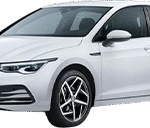Introduction
Electric Utility Vehicles (EUVs), once relegated to niche markets such as golf courses or gated communities, are now at the forefront of a seismic shift in transportation across industrial and commercial landscapes. As zero-emission mandates gain traction and the global economy pivots towards sustainable operations, EUVs are redefining logistics, maintenance, and material handling solutions. These compact, high-efficiency vehicles combine electrification with versatility, making them indispensable assets across diverse verticals.
For more info please visit: https://market.us/report/electric-utility-vehicle-market/
Market Overview
The global electric utility vehicle market has experienced an exponential surge, with its valuation breaching the USD 10 billion mark in recent years. Projections indicate a compound annual growth rate (CAGR) exceeding 8% through 2030. This acceleration is driven by both policy interventions and private-sector commitments to decarbonize fleets. North America and Europe dominate the landscape, buoyed by infrastructural readiness and aggressive green mandates. Asia-Pacific, particularly China and India, is rapidly emerging as a powerhouse, supported by domestic manufacturing prowess and increasing urbanization.
The market can be bifurcated into several segments: industrial electric utility vehicles, agricultural EUVs, and commercial service vehicles. Each sub-sector caters to a distinct array of applications—ranging from factory-floor logistics to airport ground support—ensuring that growth is multifaceted and robust.
Technological Innovations and Advancements
Electrification is only the beginning. The EUV market is now characterized by rapid technological metamorphosis. Lithium-ion battery technology has undergone significant optimization, resulting in faster charging, longer life cycles, and higher energy densities. Solid-state batteries are on the cusp of commercialization, promising a revolution in both performance and safety.
Moreover, the infusion of IoT and telematics has introduced a new paradigm of fleet intelligence. Real-time diagnostics, predictive maintenance, and route optimization algorithms enhance productivity while minimizing downtime. Some manufacturers are also delving into autonomous and semi-autonomous driving capabilities, particularly for use in controlled environments like warehouses or ports, where human oversight can be minimal.
Drivers of Market Growth
Environmental accountability is perhaps the most potent driver for EUV adoption. Governments across the globe are enforcing stringent emissions norms and incentivizing fleet electrification. From carbon credits to tax rebates, the policy ecosystem has become increasingly favorable.
In addition to sustainability mandates, the long-term economic calculus of EUVs is compelling. Lower fuel and maintenance costs, coupled with enhanced asset longevity, contribute to a marked reduction in total cost of ownership (TCO). Furthermore, electric utility vehicles are no longer confined to industrial applications. Their deployment is expanding into sectors such as agriculture, healthcare, tourism, and municipal services, underscoring their adaptability and relevance.
Challenges and Constraints
Despite their growing ubiquity, EUVs face several headwinds. The underdevelopment of charging infrastructure, especially in rural and under-resourced regions, continues to inhibit widespread adoption. Additionally, while operational costs are lower, the upfront investment required remains a significant barrier for small and medium enterprises.
Range anxiety—though more prevalent in passenger EVs—also affects EUVs, particularly in off-grid or large-area deployments. The current energy density of even the best-in-class batteries may fall short for heavy-duty or prolonged operations. Manufacturers are grappling with balancing weight, power, and endurance without compromising vehicle agility.
Competitive Landscape
The market is a battleground of legacy players and agile disruptors. Established OEMs such as Polaris Inc., Club Car, and Textron are leveraging decades of engineering expertise to roll out next-generation electric platforms. Meanwhile, startups and specialized manufacturers are introducing leaner, smarter, and more cost-effective alternatives.
Strategic collaborations, acquisitions, and technological licensing deals are reshaping the competitive matrix. For example, partnerships between battery manufacturers and vehicle producers are resulting in co-developed energy solutions that elevate performance benchmarks. Product lines are diversifying to include multi-utility modular platforms that can be configured for specific tasks, from cargo hauling to surveillance.
For more info please visit: https://market.us/report/electric-utility-vehicle-market/
Future Outlook and Strategic Opportunities
The electric utility vehicle market is on the cusp of a golden decade. Developing economies offer vast, untapped potential as they urbanize and industrialize. Additionally, the confluence of EUVs with decentralized renewable energy—such as solar-powered charging depots—could make these vehicles self-sustaining in the truest sense.
Government policies will remain a critical enabler. Subsidies for fleet conversion, low-interest green loans, and import-export incentives are already catalyzing adoption in many regions. By aligning with smart city initiatives and next-gen mobility frameworks, electric utility vehicles can evolve from being mere functional assets to becoming foundational elements of tomorrow’s sustainable infrastructure.
As electrification transitions from novelty to necessity, EUVs are poised to be more than just utility vehicles—they will be engines of economic efficiency, ecological stewardship, and technological innovation.
- From Factory Floors to Farmlands: The Expanding Role of EUVs
- The electric utility vehicle (EUV) market is rapidly evolving, driven by sustainability mandates, technological innovation, and shifting industrial needs. This article explores key market dynamics, segmentation trends, regional developments, and the future outlook of EUVs, highlighting their growing role in transforming logistics, agriculture, and construction sectors through eco-friendly and efficient mobility solutions.
- #SmartLogistics #EVInnovation #ZeroEmissionVehicles #IndustrialEVs #AutonomousUtilityVehicles #EVMarketTrends #FutureOfTransportation #EcoFriendlyVehicles
Related posts:
 Finding the Right MOT Centre Near Me: Why NH Service Center Ltd Is Milton Keynes’ Trusted Choice
Finding the Right MOT Centre Near Me: Why NH Service Center Ltd Is Milton Keynes’ Trusted Choice
 Why More UK Drivers Are Switching to Japanese Used Cars with Nobuko Japan
Why More UK Drivers Are Switching to Japanese Used Cars with Nobuko Japan
 Electric Skateboards: Revolutionizing Urban Travel and Commuting
Electric Skateboards: Revolutionizing Urban Travel and Commuting
 Importance of Employee Training and Certification in Service Quality Assurance
Importance of Employee Training and Certification in Service Quality Assurance
 From Basic Service to Complex Repairs: One Trusted Garage for Your German Car in Abu Dhabi
From Basic Service to Complex Repairs: One Trusted Garage for Your German Car in Abu Dhabi
 Why the VW Beetle Engine Model Kit is a Must-Have for Automotive Hobbyists
Why the VW Beetle Engine Model Kit is a Must-Have for Automotive Hobbyists
 Autonomous Ride-Hailing is Here: What to Know About the Robotaxi Market
Autonomous Ride-Hailing is Here: What to Know About the Robotaxi Market
 Common Myths About Affordable Auto Transport company in USA (And the Truth)
Common Myths About Affordable Auto Transport company in USA (And the Truth)







